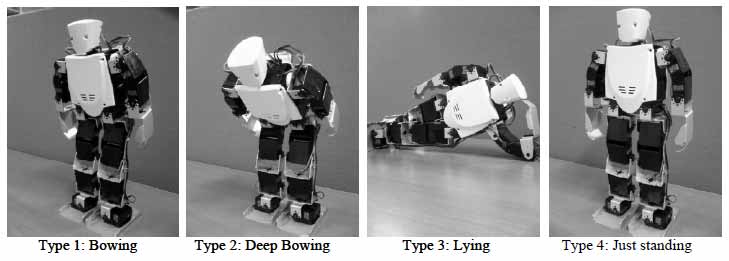Should robots behave politely? Because, to some, it’s a given that in the not-too-distant future large numbers of people will be interacting with robots (domestic, public, corporate and perhaps even law-enforcement/military) on a frequent basis.
Professor Tatsuya Nomura at the Department of Media Informatics of Ryukoku University, along with colleagues at the ATR Intelligent Robotics and Communication Laboratories Kyoto, have been tackling the question and its implications, and have recently published their results in a paper entitled ‘Effects of Polite Behaviors Expressed by Robots: A Case Study in Japan’.
The team conducted a ‘psychological experiment’ using a small humanoid robot called ‘Robovie-X‘. The bot has “a function of utterance” based on audio data recorded in advance, and was programmed to say – [loosely translated from the original Japanese]
“Hello, I am Robovie-X. Please fill the cup with tea in the plastic bottle in front of you, and then drink it. Before drinking, please separate the garbage produced from the empty plastic bottle. Thank you for your cooperation.”

At the same time, Robovie-X assumed a variety of pre-programmed bodily postures – either bowing, deep-bowing, lying down, or just standing. (as pictured)
A group of 42 experimental subjects were each paid ¥1000 to rate the robot’s behaviours – deciding whether they were perceived as Polite, Cheerful, Warm, Showy, Aggressive, Boring etc etc. Data from the experiment were then analysed using the Maximum-Likelihood Method, Bonferroni’s method and Promax Rotation techniques – with the results strongly suggesting that “…differences of polite behaviors expressed by the robot affected participants’ impression of and behaviors toward the robot.”
For example, some found that the lying-down pose was unduly impolite, and other that the ‘deep-bowing’ pose was overly extrovert. Though the study is one of a very few to have advanced the understanding of the politeness implications of robotic posturing, the researchers go on to caution that – “The research is a case study and the results are limited to the Japanese samples experiencing a small-sized humanoid robot and specific polite behaviors.”





Comments